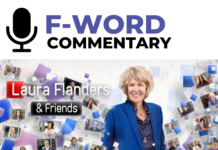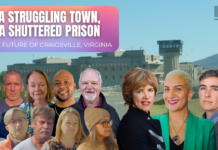Redistricting has the power to shape elections, and this year, it’s more controversial than ever. After a contentious 2020 census, the development of advanced mapping technologies, and a 2019 Supreme Court decision that put partisan gerrymandering outside the scope of federal courts, voting rights advocates contend that racial gerrymandering is rampant—in the south and beyond. In this episode, Laura speaks with redistricting experts from Colorado, Michigan, Texas, and New York who are working to ensure that minority voters have a seat at the table. It’s not too late, they say. New technologies are making it possible for citizens groups to step into the fray and fight for fairer representation.
Guests
- Khyla D. Craine, Redistricting Committee Chair Delta Sigma Theta Sorority, Inc.
- Carly Hare, Colorado Independent Congressional Redistricting Commission, Chair; Pawnee/Yankton
- Michael Li, Brennan Center for Justice, Senior Counsel Democracy Program
- Stephen Holmes, Commissioner Precinct 3, Galveston County, TX
To listen to the uncut interviews, and to get episode notes for this episode and more, become a Patreon partner here.
Prefer to Listen?
Transcript
THE LAURA FLANDERS SHOW
DEMOCRATIZING DEMOCRACY: REDISTRICTING BY THE PEOPLE
LAURA FLANDERS: Article I of the U.S. Constitution lays out that elections to the House of Representatives will be held every two years. And the number of delegates will be apportioned amongst the states, according to their relative populations. The framers fought bitterly over the number, but eventually agreed that no single representative should represent more than 30,000 people. And each state should have at least one rep. Nowhere, not once in the entire document, does anyone use the word district. It’s a point worth underscoring because today the districting or redistricting process has become highly contentious and often blatantly partisan and the most powerful players in party politics sometimes seem reluctant to do anything about it. At this point in the cycle, slightly more than half of all the states have completed their districting and redistricting process. They’ve drawn their maps, but it’s not too late for the public to get involved. Indeed, new technology is making it easier for citizens groups to draw up their own maps. Today we talk with four people with personal experience in the redistricting process. Stephen Holmes, the commissioner for Precinct 3 in Galveston County, Texas has held office for 23 years and he’s about to lose his precinct because of redistricting. Khyla Craine, a Michigan resident, and an attorney is also a social justice advocate, who is the redistricting committee chair for Delta Sigma Theta, one of the first Black sororities. Carly Hare of the Pawnee Yankton Nation is the chair of the Colorado Independent Redistricting Commission and the first executive director of Culture Surge, an arts based coalition, focused on justice and democracy. And finally, Michael Li, is the Senior Council of Democracy for the Brennan Center for Justice at New York University. Welcome everybody, what an eminent crew. I guess I’ll start with you, Michael. You say it often enough and you have a hard time remembering that it has to do with actual people. So just tell us what redistricting really is. And I’m right in saying it’s not in the constitution, right?
MICHAEL LI: Well, that’s right. It is not in the constitution. The reapportionment of seats among the states is something that happens every 10 years after the census. But redistricting is something that we started doing just to make sure that districts are equally populated. And now that they comply with other requirements of laws such as the Voting Rights Act. And so it’s supposed to be for a good purpose. It’s supposed to make sure that we’re representative. And as John Adams said at the beginning of the country, legislatures, Congress should be an exact portrait, a miniature of the people as a whole. And that’s really the idea that if your interests are at the table, then, so should you be. Unfortunately, almost from the very beginning of the country, people figured out a way to put their thumb on the scale, to draw districts in a way that favored themselves or their party or punished their political opponents and discriminated against people that they don’t like. And that’s something that even predates the term gerrymandering. Patrick Henry, of Give me liberty, or give me death fame was governor of Virginia when the state drew its very first congressional map and he hated a man named James Madison and tried to make it impossible for James Madison to win election to Congress. He wasn’t successful, but it, this goes to show you that even the framers wanted to do this. And it’s unfortunately something that’s gotten much worse with data technology, but it’s been with us a long time and it’s been something that we’ve really struggled to get right.
LAURA FLANDERS: Khyla to you. Is there anything you would add to this picture? You also have been involved at a professional level in trying to kind of assess what’s fair, what’s not, what’s serving the purpose of fair representation in this ostensible or aspiring to be country of a democracy.
KHYLA CRAINE: Thank you Laura, for having Delta Sigma Theta here to talk about redistricting, we are a predominantly Black historically sorority. So we’re very concerned about equity in the redistricting process, making sure that communities of color, Black communities in particular are not splintered in the redistricting process, ensuring that those communities are not split amongst many different districts or compact into one single district as to minimize their electoral strength. And so we have been training our members across the country for many years about looking at those maps and being very strategic about how those maps are drawn so that communities of color are able to elect candidates of their choice. And so that everybody does have a seat at the table when you’re talking about electing representatives, not just us on the congressional or even state level, but making sure that people know this goes all the way down to the school board level city, council, county council. And so all of those levels, we’re looking to making sure that everybody does have an equal and equitable voice when it comes to selecting their representatives, an elected official.
LAURA FLANDERS: But I mean, Carly coming to you, you have been part of an independent commission. How did that come into effect? And what are the role, what are the many roles that people, regular folks can play in all of this? ‘Cause it’s regular folks’ votes and I’m imagining in Colorado, especially Indigenous people’s votes that came out so visibly and effectively in the last election cycle that are gonna be targeted.
CARLY HARE: Well, I would just on that note as an Indigenous woman navigating the politics of this country, there is always a dissonance around watching our traditional homelands be represented in ways that don’t map our core values and our community values. So it definitely was interesting being able to sit in that chair. And I think specifically in Colorado and like many states, we are, our communities are changing. In Colorado, the number of voting age, people of color increased significantly from the last census, the last census map. We also increased in the number of people that came into the state in that space as well. We also have a number of people who are, I think, disenfranchised in many ways. So Colorado has a breakdown of roughly 28% Democrats, 25% Republicans, and then 44% Independent in this state. Like we are severely gray in many ways. And to Michael’s point, you can find out what that gray is with sophisticated maps of unaffiliated. But our process was set up to try to address some of those issues to address the maps. ‘Cause we had three consecutive redistricting cycles that went to the state Supreme Court because the legislature couldn’t decide on one. So it was this centering of partisanism was challenging. This center of elected officials, making those decisions I think was uniquely what made Colorado stand out differently. It’s why the amendments were put into place. I think it’s partially led to why 70 plus percent of our voters voted to support these amendments. And the way that we are one of 10 in the country that have independent redistricting that don’t have political officer representation. So our tenor, and we look all very different across the 10 of what that looks like. But Colorado set up a three, three and three or four, four and four model. So four Republicans, four Democrats and four unaffiliated voters, and through that we also had a voting process that was very clear. You had to have at least two unaffiliated voters of your mix and have at least eight people of our 12 be able to vote something into place most often. And some of the core key decisions, it had to be 10 of the 10 of our commissions members had to vote for it with the two unaffiliated markers in there. But I think to your, to the, the core question really is we are struggling. We are struggling in this country for power and access and influence, and we are growing and diversifying every single day and what that looks like. And yet the laws and systems we have in place have been manipulated or have always, or have never been clear about supporting that, have always supported a dominant white cultural framework to lead in this space. And so there are a lot of systems change, work that we need to think about. And not only is it about how these maps get drawn, but it’s about the people. Who’s going to show up thinking their voice is going to count.
LAURA FLANDERS: Well, this is very contested territory and it has been from the very beginning. And I wanna come back to you, Michael, on this, you mentioned gerrymandering. Gerrymander was actually a person as I understand it. What is it? And then it’s important that we consider the origins of our data. And you mentioned that the census plays a big role in this. And we just took a census in the middle of a pandemic with the president, terrifying all sorts of people from participating. I might not be, I hope I’m not putting it too strongly, Michael.
MICHAEL LI: Well, gerrymandering is the term that we use to describe political manipulation of maps in this country. It comes from a map in Massachusetts that governor Elbridge Gerry signed in 1812, that many people thought was really egregious. But yet, if you look at the map today, it’s not nearly as bad as some of the maps that are being drawn nowadays, but that’s, it became, it looked like a salamander. So people called it a gerrymander and that term stuck. And it’s, gerrymandering is something that has been with us really from the very beginning of the country. But it is something that is getting worse because in the past, when you drew maps, you did it by hand and you could draw three or four or five maps and you pick the best one that accomplish your goals out of the three or four or five maps. But now with computers and much more robust data, you’re able to draw maps with much more micro precision. You could draw hundreds of thousands of maps using supercomputers in a matter of days. And then you could pick out on the best of those. You also have much more data about voters based on what kind of car you drive, where you shop, what you’re posting on Facebook or Instagram. People can construct really robust models about who you are, whether you’re a Democrat or a Republican, how robust or Democrat or a Republican you are, whether you vote on the midterms or just on the presidential years. And with that data, you’re able to draw maps that really do stick, that really do accomplish what you want. And that is really remarkable. And so, for example, in a state like Texas there were, under the old map, Texas had 11 districts, Donald Trump won by 11 or more or 15 or more points in 2020. Now there are 21 such districts, right? They’ve made all of the districts that they hold in Texas much more super Trump districts and Texas didn’t really rely on a lot of big data or anything like that. But you can use big data to do that. And that’s really a very anti-democratic, small-d, pernicious sort of thing that is occurring around the country.
LAURA FLANDERS: In 2013 in Shelby versus Holder, the Supreme Court ended the pre-clearance requirements of the Voting Rights Act. What impact did that have on Texas? Well, for an answer to that question we go to Stephen Holmes who has long represented Precinct 3 in Galveston, a uniquely multiracial district where he has been the lone Democrat of color in the county. I asked him what difference has the Supreme Court’s change in the rules meant for him?
Talk about how this happened in 2013, the Supreme Court in Shelby versus Holder made a change to the Voting Rights Act and ended the federal pre-clearance requirement for changing like this, to the districting maps of communities like yours, what happened where you are?
STEPHEN HOLMES: What happened in the 2011 redistricting cycle prior to Shelby County was obviously, got counties like Galveston in the state of Texas had to submit their map for pre-clearance to the justice department. There was a map submitted by the Galveston County commissioner’s court that did much of the same thing to Precinct 3, my precinct. The Justice Department kicked it back and said, no, this is not a good map. It dilutes the strength of minorities within this precinct and the commission’s court had to go back and withdraw a new map and fast forward to Shelby County, 2013. Which strikes down the pre-clearance requirement, Galveston County goes through the redistricting process, which wasn’t much of a process in 2021. There’s no need to pre-clear. And so they pass the map, any map that they want. I think what people need to, we need to know about certain redistricting and who it affects, Laura, to be quite honest with you, it’s not about me as the elected official, it’s about the community and what happens to the communities. So I mean, elected officials come and go, but powers that are given to certain communities and the pride that they have. If you look at us here in Galveston County, there’s so much pride in Galveston County, amongst the people. Galveston was the birth of Juneteenth, where the Juneteenth, that’s where it happened in Galveston, in Galveston County, Texas. So there’s a lot of pride there. There are many of the first in Texas, the first African American Baptist church in Texas was in Galveston. The first Black high school was in Galveston. The first county park was in Galveston, so in Texas. So if there’s a lot of pride, there’s a lot of pride in people there. And when I first took office, to be honest with you, Laura there were people who would, when they were born, they had living ancestors who were born into slavery, Laura. So and then you take all that forward. And they live through all the depression and the civil rights era. And they’ve lived through all that. And to see all this come back and get the clock turned back on all of these things and all these gains that these communities have made. And that people within the precinct have seen transpiring take place. It is a huge blow.
LAURA FLANDERS: What recourse do you have? I understand there’s a lawsuit.
STEPHEN HOLMES: Yeah, but that’s what the problem gets created without the voting, these, without pre-clearance because you have jurisdictions like mine, I’m sure there are hundreds, if not thousands of them who are experiencing the exact same thing that we’re experiencing in Galveston County. So the only recourse is without the Justice Department pre-clearance, the only recourse is federal lawsuits and that’s it. And so, yeah, there will be lawsuits. I’m sure hopefully more will come. Hopefully the Justice Department will come down and file lawsuits as well on behalf of the citizens of Galveston County to try to rectify this change. Or if nothing else it would, I would love to see Congress pass voting rights legislation that would stop this and reinstate the pre-clearance aspect of the Voting Rights Act.
LAURA FLANDERS: Commissioner of Stephen Holmes. I wish you absolute luck and we’ll be watching and thank you for taking some time to be with us today.
STEPHEN HOLMES: Thank you for your time. And thanks for having me, Laura, thank you.
LAURA FLANDERS: So is there recourse at the federal level? Back to the Brennan Center’s Michael Li.
MICHAEL LI: Federal Courts in recent years have increasingly become not the place to go in order to seek redress for harms that occur in redistricting. The Supreme Court has gutted key provisions of the Voting Rights Act in multiple decisions. It may further carve back on what’s left of the Voting Rights Act in a case that the court will hear next October coming out of Alabama regarding whether that state has an obligation to create a second Black opportunity district in its congressional map or not. But likewise, the Supreme Court has partisan gerrymandering by saying that partisan gerrymandering doesn’t violate the U.S. constitution, or at least that you can’t bring those claims in Federal Court that really has opened a door to a lot of racial discrimination, because what you’re seeing around the South in particular is Republican map drawers defending maps saying, oh, well we were just discriminating against Democrats. And yes, they happened to be Black, Latino, and Asian, but we weren’t discriminating against them because of their race. We were just trying to target Democrats and you the Supreme Court had said that’s perfectly okay. And it may turn out that the Supreme Court in green lighting partisan gerrymandering really has as much ended up green lighting racial discrimination, because we’re seeing that around the country, in state after state, after state.
KHYLA CRAINE: Redistricting is about money, power, and access. And this is why we’re really intentional about looking at these maps, looking how they’re drawn, making sure that when they are drawn, that we are looking at not only just the compactness, but also where people are living so that we can provide that additional insight to the map making process. It’s been tremendously impactful for us to have access to free mapping softwares so that our members are able to go into those softwares, look at their own cities, their own states, and try to devise a map on their own so that they can see how a map could be drawn that is consistent with the traditional map making procedures, but as well as ensuring that communities of color are not split because while there is an argument, particularly on the Republican side, but that they’re just trying to advantage their own political party, but we all know that overwhelmingly communities of color in this country vote democratic. And so there is a kind of a red herring to say that we’re just trying to advantage our Republicans. When you can see by how specific lines are drawn, how you curve around this area of this city that is richly dense in communities of color, how it’s fractured in many different ways that it’s not just trying to advantage their political party, but it’s also looking at who lives there and is splintering them accordingly. And so it’s, we are looking like I said, we’re looking at it from a racial and an ethnic lens but not being deceived that there is a political aspect to it as well.
LAURA FLANDERS: The way that this redistricting story is told is not the way that would engage most people. And yet I am hearing in what you all have to say and the involvement of the sorority and movement groups, like the ones you represent, that there is a way for regular folks to get involved and that they are getting involved. I’m hearing a lot about, what is it called? Dave’s redistricting. Carly, you wanna come in on that?
CARLY HARE: Definitely, we were very clear and transparent. Every single one of our meetings had to be public meetings. We had Dave’s redistricting up before even the census information was up for people to submit maps. 75 independent maps were submitted by individuals through the process. We had over 5,000 independent individual comments that were submitted through our portal about just general thoughts on districting, as well as the specific maps. And we did 40 public hearings during pandemic times. So half of them are in person or about a third of them are in person and a third were remote, a mixture of what that looked like. But we spoke to over a thousand individuals in that process. I think the census number, the census process in the last, this decennial was challenging in many ways. However, I feel there was such a strong outcry from community organizations, from local state and national philanthropy to make sure that the census process was supported by trusted community partners, to make sure we were getting to particularly communities of color and underrepresented voices and communities that may have felt threatened by how it was laid out in the process. So it was key to have those partners on the ground in that space. It will be key for us to reach true multicultural democracy, to continue to not only work on redistricting, but in these, voter restrictive laws that are coming into states, because as you compound these challenges, it looks different for my aunties and my Uccas and my uncles and my cousins about feeling like they’d even need to show up at all. If the system is so, are against them. And that’s why for me, the sharing of this process led to a career shift. I am now shifting my role to sit in supporting people to engage in political process through storytelling, through cultural, organizing, through collective narratives and narratives that aren’t about centering the democracy that we’ve created and then the structure of the democracy, but centering how we be, how we are in community together and how we can be better in community together.
LAURA FLANDERS: Running out of time, I just wanna let both Michael and Khyla. Michael quickly, anything you wanna add about how people can get engaged?
MICHAEL LI: Well, I think last decade we saw a record amount of reform of record six states and acted some form of redistricting reform. And a lot of that was citizen led and Michigan, everyday citizens got together and collected 500,000 signatures and put something on the ballot and push for reform. Likewise, people are getting out there proposing maps, commenting on maps, and it’s much easier to do today than it was in the past, because you can go online and draw your maps. You can go online and analyze maps. You can go online and look at maps and be prepared to comment. And so it’s much easier today than it was in the past. So technology in some ways is making gerrymandering worse, but technology’s also giving people a seat at a table that they didn’t have before.
LAURA FLANDERS: And when the Delta stigma that a sorority gets involved, I think your days are numbered, right, Khyla?
KHYLA CRAINE: We will absolutely hold you to account, absolutely. And so Delta, I’m very proud of my members who I’ve been getting engaged in this process. You can go on our Facebook page, which is DSTINC 1913. We created a Redistricting After Dark series to talk to various people that are involved with redistricting to kind of break it down and help people understand what redistricting is and how it impacts them, and then give them resources with our friends and the civil rights community like Michael, Southern Coalition for Social Justice, the LDF, NAACP who have plenty of resources to help you understand redistricting. Because again, this will happen once again in 2031. And so there’s plenty of time for you to read up on it and understand it so that you can get involved in any level with redistricting next go around.
LAURA FLANDERS: Great, thank you all so much.
Early voting in the first 2022 primary elections that take place in Texas began this month with new voter ID laws, causing ballots to be returned in massive numbers and new districts drawn like Steven Holmes’. At the same time, we’re seeing in that same state, an upsurge in citizen and civilian activity. Residents are getting involved both to reclaim their election process and to change it, especially new residents, newcomers to the state who see a future in that red place that looks a whole lot more blue. Is it a problem for more people to get involved in our democracy, for less reliance to be put on our parties and the offices of state? I don’t think so. You can listen to the full uncut conversation by subscribing to our podcast, which is available at our website. Thanks for watching, till the next time stay kind, stay curious, I’m Laura.
The more on this day episode and other forward thinking content and tune into our podcast, visit our website@lauraflanders.org and follow us on social media @TheLFshow.
Want More Coverage?
You can find more LF Show coverage on politics and society here.
Accessibility
The Laura Flanders Show is committed to making our programming, website and social media as accessible as possible to everyone, including those with visual, hearing, cognitive and motor impairments. We’re constantly working towards improving the accessibility of our content to ensure we provide equal access to all. If you would like to request accessibility-related assistance, report any accessibility problems, or request any information in accessible alternative formats, please contact us.
















